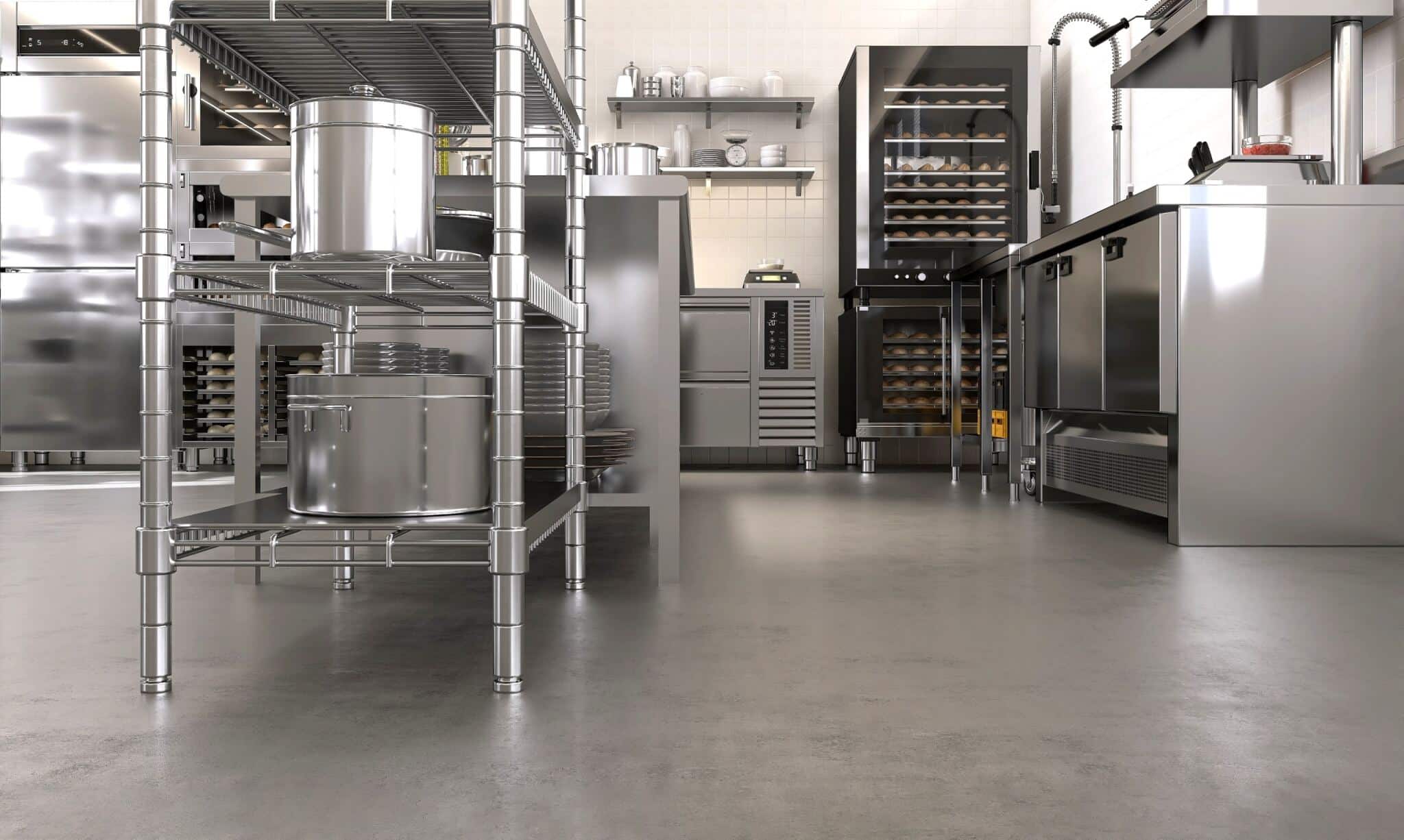For operators of commercial kitchens, maintaining a safe and efficient kitchen exhaust system is critical. The Best Practice Guide (BPG)for Commercial Kitchen Exhaust Management introduces an evidence-based, risk-adjusted approach to exhaust system maintenance that shifts the focus from rigid schedules to customised strategies tailored to operational realities.
By basing cleaning schedules on grease accumulation, cooking type, and system usage, businesses can ensure compliance, optimise safety, and reduce unnecessary costs. Here’s how to establish an evidence-based cleaning schedule and improve maintenance with grease thickness measurement.
The Importance of Evidence-Based Maintenance
Traditional cleaning schedules often rely on fixed intervals, which may not reflect the actual condition of kitchen exhaust systems. High-use kitchens producing grease-heavy cooking emissions require more frequent cleaning than lower-use facilities. Failure to clean exhaust systems effectively can lead to grease buildup, creating fire risks and health hazards.
The BPG’s evidence-based approach addresses this issue by advocating for grease thickness measurements as a scientific method to determine when cleaning is needed. This approach ensures that cleaning efforts are directly tied to risk factors, preventing both over-maintenance and dangerous neglect.
How Grease Thickness Measurement Works
Grease thickness measurement is a practical method to assess the level of grease accumulation in an exhaust system. The BPG recommends the following grease thickness limits as triggers for cleaning:
- Maximum Mean Grease Thickness:0.2 mm for general ductwork.
- Urgent Cleaning Threshold:2.0 mm in critical areas.
These standards provide clear benchmarks for action, allowing operators of commercial kitchens to make informed decisions about cleaning frequency. Measurement is typically conducted using a grease depth gauge or other industry-standard tools, ensuring consistency and accuracy.
Best Practices for Measuring Grease Thickness
Choose and record the location of key points in the exhaust system, including the hood, filters, and ductwork, where grease buildup is most likely. The BPG emphasises selecting locations that represent typical grease accumulation patterns, and critical areas such as bends in ductwork and transitions between system components should be prioritised.
Measurements can be made using calibrated grease depth gauges or similar devices. Digital tools can provide precise readings and reduce errors. Measurements must be taken at the same locations and angles each time for reliable comparisons.
Record measurements in a logbook or digital maintenance system. Include the date, location, and thickness reading for each measurement point.
Establishing an Evidence-Based Cleaning Schedule
The starting point is to conduct initial grease thickness measurements across the exhaust system to establish a baseline.
Using the current thickness of accumulated grease and the time since the last exhaust clean, it is possible to get an early indication of build-up rate and the likely time before the 0.2mm build-up threshold will be reached.
This information will assist in scheduling regular measurements to monitor grease accumulation trends. At the outset, these might be monthly with the frequency adjusted based on changes in cooking activity or seasonal variations.
Recording and Monitoring Grease Build-Up
To optimise kitchen exhaust maintenance, it is essential to track and analyse grease buildup data systematically. Best practice would include the following:
- Use a digital platform or software to maintain records for each venue. Include grease thickness measurements, cleaning dates, and any maintenance issues.
- Regularly review data to identify patterns, such as areas with consistently higher grease accumulation. Use this information to adjust cleaning schedules or address underlying issues.
- Share insights with facility managers, health and safety officers, and compliance teams. Clear reporting builds confidence in maintenance practices and supports regulatory compliance.
- Combine grease thickness measurements with visual inspections to identify areas where grease may not adhere uniformly. This adds an extra layer of safety.
Benefits of Evidence-Based Scheduling
Evidence-based cleaning reduces the risk of grease-related fires, protecting staff, customers, and property. In addition, it balances operational costs with risk mitigation and demonstrates a proactive approach to meeting health and safety regulations, reassuring both inspectors, landlords and insurers.
Conclusion
The BPG’s evidence-based approach represents a significant advancement in kitchen exhaust maintenance. By measuring, recording, and monitoring grease buildup, hospitality managers can create customised cleaning schedules that optimise safety, compliance, and cost-efficiency. Adopting these best practices ensures not only peace of mind but optimises performance of critical exhaust systems.
For those managing multiple venues, implementing a structured maintenance program aligned with BPG recommendations is a proactive strategy to protect assets and minimise risk.

